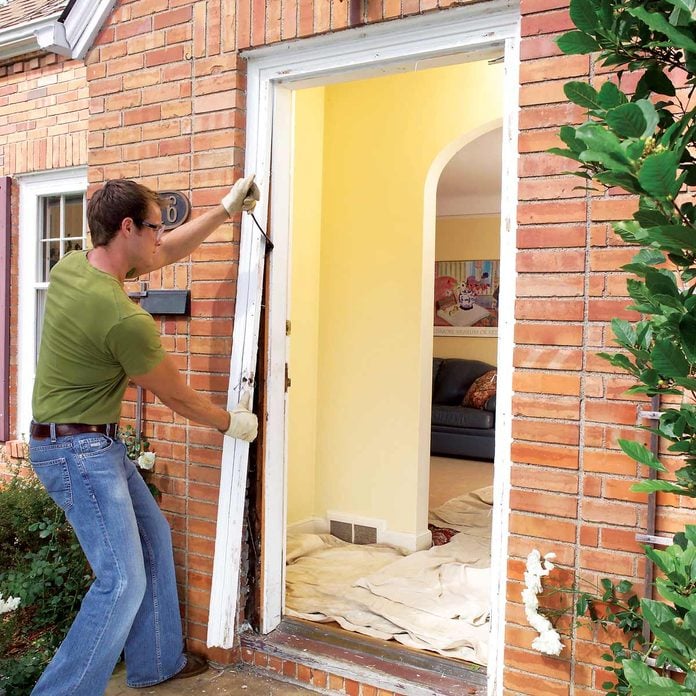When it comes to protecting your home, one of the most crucial aspects is ensuring that your entry door is properly weatherproofed. The entry door is not just a focal point of your home’s exterior but also a primary barrier against the elements. Proper weatherproofing can prevent drafts, reduce energy costs, and protect your home from water damage. In this comprehensive guide, we will provide you with essential tips installation entry door to weatherproof your entry door effectively, ensuring long-lasting protection and peace of mind.
Why Weatherproofing Your Entry Door Is Important
Weatherproofing your entry door is vital for maintaining the integrity of your home. Without proper sealing and insulation, your door can become a weak point, allowing moisture, wind, and even pests to enter your home. This can lead to increased energy bills, mold growth, and potential structural damage. By investing time and effort into weatherproofing, you enhance your home’s energy efficiency, comfort, and overall value.
Choosing the Right Materials for Weatherproofing
The first step in weatherproofing your entry door is selecting the appropriate materials. Here are some key materials to consider:
1. Weatherstripping
Weatherstripping is essential for sealing gaps around the edges of your door. It prevents air and moisture from infiltrating your home. There are several types of weatherstripping materials, including foam tape, felt, and vinyl. Foam tape is easy to apply and provides an excellent seal, while vinyl weatherstripping is durable and effective for areas with heavy traffic.
2. Door Sweep
A door sweep is a crucial component in preventing drafts from entering beneath your door. It is typically installed at the bottom of the door and can be made from materials such as rubber or bristle. When installing a door sweep, ensure it fits snugly against the threshold without impeding the door’s movement.
3. Caulk
Caulking is an effective method for sealing gaps and cracks around the door frame. Use a high-quality, exterior-grade caulk that can withstand temperature fluctuations and exposure to moisture. Silicone-based caulk is a popular choice due to its durability and flexibility.
4. Insulating Foam Sealant
For larger gaps or cracks around the door frame, insulating foam sealant is an excellent option. It expands upon application, filling gaps and providing a tight seal. However, be cautious when using foam sealant, as it can expand significantly and should be applied sparingly.
Step-by-Step Guide to Weatherproofing Your Entry Door
Now that you have the necessary materials, follow these steps to weatherproof your entry door effectively:
1. Inspect the Door and Frame
Begin by thoroughly inspecting your door and its frame. Look for any signs of wear, damage, or gaps. Pay close attention to the corners, edges, and threshold. If you notice any cracks or damage, address these issues before proceeding with weatherproofing.
2. Remove Old Weatherstripping
If your door already has weatherstripping, remove it carefully. Over time, weatherstripping can deteriorate, losing its effectiveness. Use a putty knife or scraper to gently remove the old material, ensuring the surface is clean and free of debris.
3. Install New Weatherstripping
Measure the length of each side of the door frame and cut the new weatherstripping to size. Start with the sides, pressing the weatherstripping firmly into place. Ensure it forms a tight seal without obstructing the door’s movement. Repeat the process for the top of the door.
4. Install the Door Sweep
Measure the width of your door and cut the door sweep to size. Position it at the bottom of the door, ensuring it makes contact with the threshold. Secure the sweep in place using screws or adhesive, depending on the type of sweep you have chosen.
5. Apply Caulk Around the Door Frame
Using a caulk gun, apply a bead of caulk along the seams between the door frame and the wall. Smooth the caulk with a caulking tool or your finger to ensure a uniform seal. Pay special attention to the corners and edges where gaps are more likely to occur.
6. Seal Larger Gaps with Insulating Foam
If you discover larger gaps around the door frame, use insulating foam sealant. Insert the nozzle into the gap and apply the foam sparingly, as it will expand. Allow the foam to cure according to the manufacturer’s instructions before trimming any excess.
7. Test the Door
After completing the weatherproofing process, test the door to ensure it opens and closes smoothly. Check for any drafts or gaps that may have been missed. Make adjustments as needed to achieve a perfect seal.
Maintenance Tips for Long-Lasting Weatherproofing
Weatherproofing is not a one-time task. Regular maintenance is essential to ensure the longevity and effectiveness of your weatherproofing efforts. Here are some maintenance tips:
1. Regularly Inspect Weatherstripping
Weatherstripping can wear out over time, especially in high-traffic areas. Inspect it regularly and replace it if you notice any signs of damage or deterioration.
2. Check for Drafts
Periodically check for drafts around your entry door by holding a lit candle or incense stick near the edges. If the flame flickers or the smoke wavers, there may be a gap that needs attention.
3. Reapply Caulk as Needed
Caulk can crack or shrink over time, reducing its effectiveness. Inspect the caulk around your door frame annually and reapply it as needed to maintain a tight seal.
4. Clean and Lubricate Door Hardware
Clean the hinges, locks, and other door hardware regularly to prevent rust and ensure smooth operation. Lubricate moving parts with a silicone-based lubricant to prevent squeaks and wear.
Home Care Services: Ensuring Professional Weatherproofing
While weatherproofing your entry door is a task that many homeowners can handle on their own, there are situations where professional assistance may be beneficial. Home care services offer expert installation and maintenance, ensuring that your door is fully protected against the elements. Professional installers have the experience and tools needed to address complex issues, such as warped frames or uneven thresholds, that may affect the door’s weatherproofing.
By choosing a reputable home care service, you can have peace of mind knowing that your entry door is properly sealed and insulated, providing optimal protection for your home.



